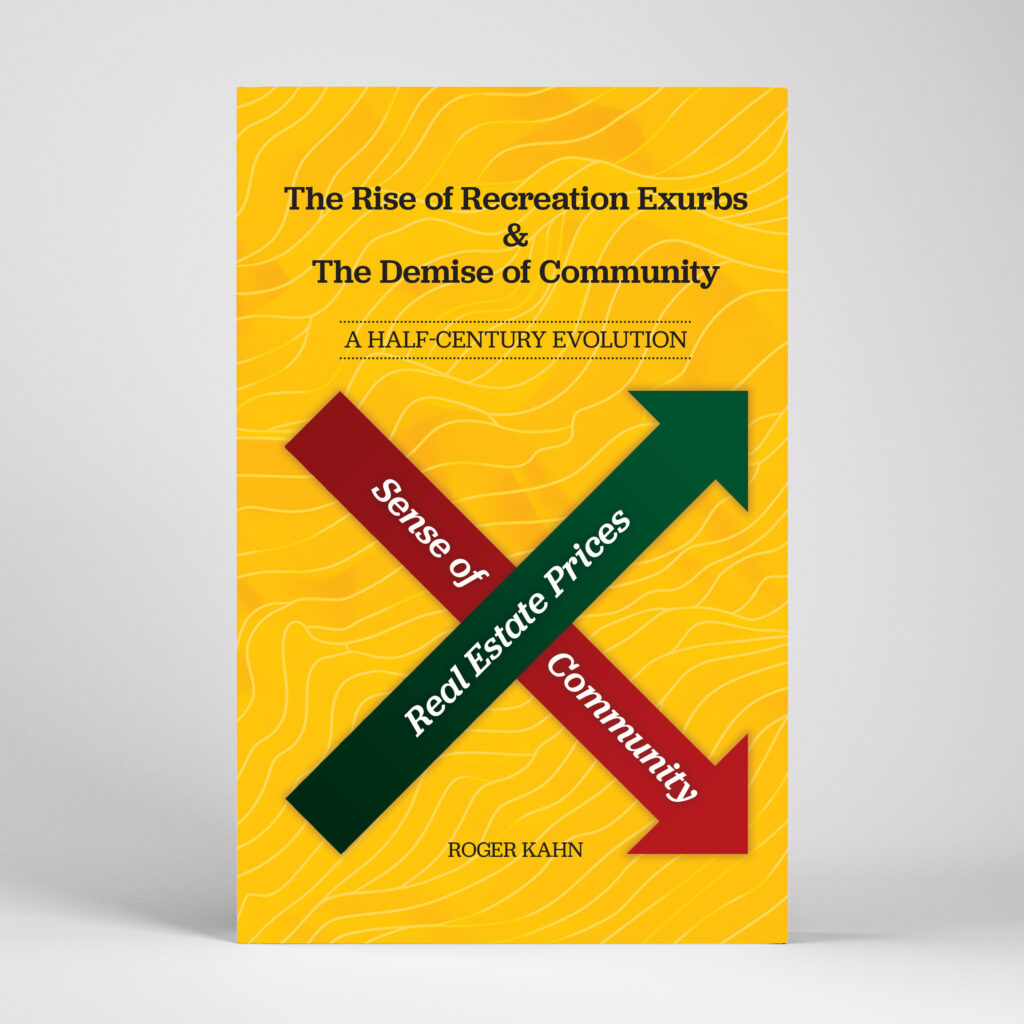
In this book, Roger examines the unidentified, half-century long, emergence of a social and political phenomena: the new American recreation exurbs.
By focusing on four examples of the roughly 150 — Martha’s Vineyard, MA, (an oceanside recreation exurb), Crested Butte, CO, (representing mountain areas) Sedona, AZ, (a desert destination) and Lake Tahoe, CA & NV, (a large lakeside locale) — this work discusses the causes and consequences of the evolution of the new American recreation exurbs. It shows that in these places, over time, there has been a direct inverse relationship between escalating real estate prices and the loss of a feeling of community among local residents. In fact, many long-time locals, because of increased real estate values, were forced out of the communities they had developed. For some of the other adverse effects, it suggests possible remedies.
Virtually all of these places are in beautiful, awe-inspiring environments which formerly were home to small, working and middle-class, tight-knit, communities based on either fishing, mining, logging, farming or ranching. Then, they became single-sport recreation towns (e.g., skiing or boating) that catered to a local and regional cliental. Following that phase, as the new local people that came with the recreation industry realized they needed a year-around economy, these communities evolved further into tourist towns and recreation communities with many amenities that served an ever increasing national tourist base. Finally, during the last two decades of the twentieth century and the first quarter of the twenty-first, they became today’s new American recreation exurbs.
All Rights Reserved © 2024 | Website Design by Kathy Amen Design